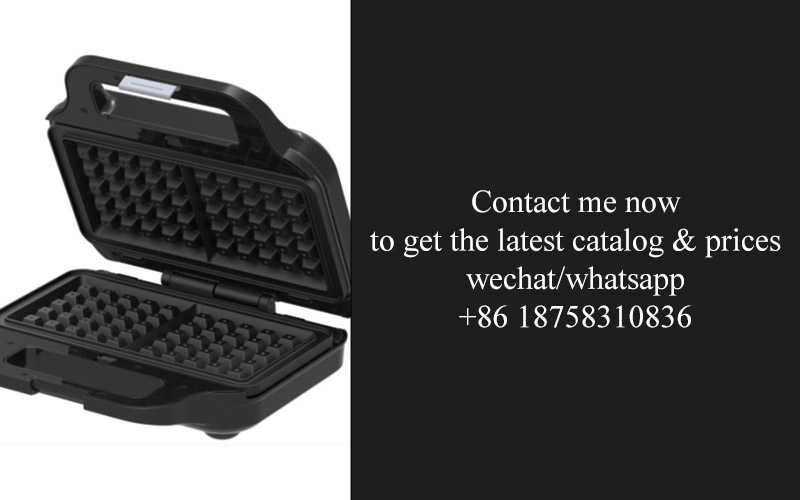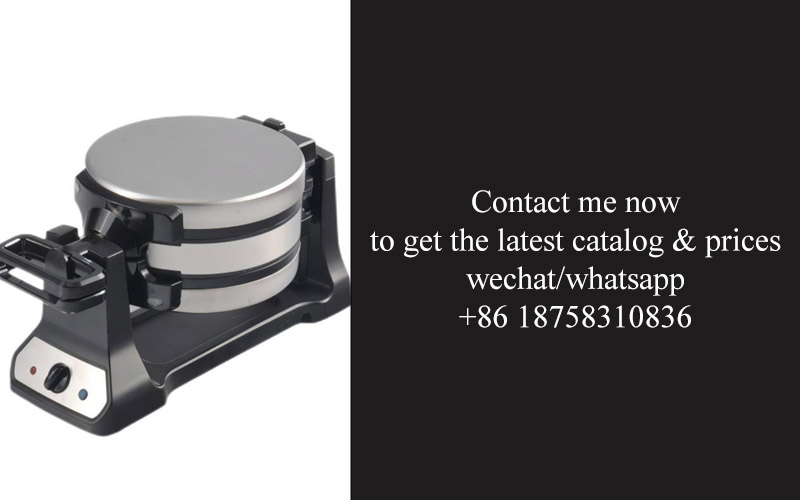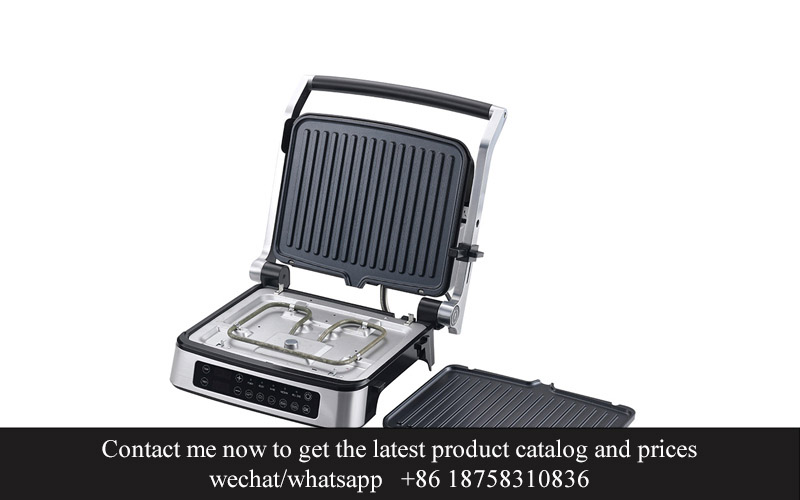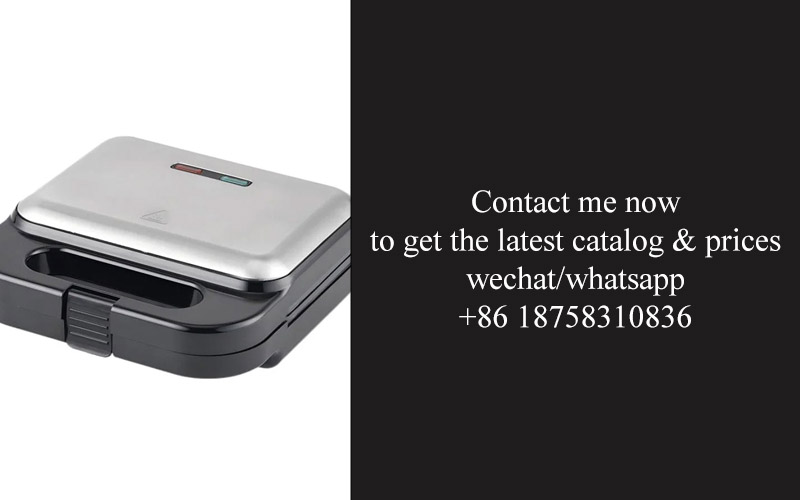Address
304 North Cardinal
St. Dorchester Center, MA 02124
Work Hours
Monday to Friday: 7AM - 7PM
Weekend: 10AM - 5PM
Address
304 North Cardinal
St. Dorchester Center, MA 02124
Work Hours
Monday to Friday: 7AM - 7PM
Weekend: 10AM - 5PM

In the heart of our homes, the kitchen has always been a place of innovation and tradition. As technology advances, the culinary landscape is evolving, with smart appliances and cutting-edge cookware becoming the norm. This shift is not just about convenience; it’s about health, sustainability, and the joy of cooking. Join us as we delve into the fascinating world of modern cookware, exploring the latest trends, the importance of certifications like LFGB, and the innovations reshaping the way we cook and live.
The Rise of Smart Kitchens
As technology continues to permeate every aspect of our lives, the kitchen, traditionally a realm of warmth and simplicity, is undergoing a transformative shift. Enter the era of smart kitchens, where the fusion of cutting-edge technology and culinary art is reshaping the way we cook and live.
Gone are the days of the standard kitchen setup with its fixed appliances and limited functionality. Modern kitchens are now hubs of innovation, featuring a variety of smart devices that cater to the ever-evolving needs of homeowners. From voice-activated ovens to smart refrigerators that track your groceries, the landscape of kitchen technology is expanding at a rapid pace.
At the heart of this revolution is the integration of the internet of things (IoT) into kitchen appliances. These devices are no longer standalone tools but part of a connected ecosystem that communicates and coordinates to provide a seamless cooking experience. Imagine preheating your oven with a tap on your smartphone while you’re on your way home, or receiving a notification on your tablet when your dish is perfectly cooked to temperature.
The convenience offered by smart kitchens is undeniable. But it’s not just about convenience; it’s about efficiency and sustainability. Smart appliances can optimize energy usage, reducing waste and costs over time. They can also adapt to your cooking habits, learning from your preferences and adjusting settings accordingly. For instance, a smart oven might detect the type of dish being cooked and automatically adjust the temperature and cooking time for optimal results.
Designers and engineers are also focusing on the aesthetics of smart kitchens. Modern cookware and appliances are sleek, with minimalist designs that blend seamlessly into the kitchen environment. This shift towards design-conscious technology is not only about beauty but also about functionality. Smart kitchen appliances are often equipped with intuitive interfaces that make them easy to use, even for those who are not tech-savvy.
Another significant aspect of the rise of smart kitchens is the emphasis on health and wellness. Smart scales, for example, can help track your food intake and nutritional value, ensuring that you maintain a balanced diet. Smart water filters and air purifiers are also becoming common, providing clean, safe water and air quality in the kitchen, which is crucial for health and safety.
Cooking itself is also being redefined by smart technology. Smart cooktops can monitor the heat levels of pots and pans, adjusting to maintain a constant temperature. Smart cookbooks and recipe apps offer a world of inspiration, with step-by-step guidance and even ingredient tracking. Some of these apps can even suggest recipes based on the ingredients you have on hand, reducing food waste.
Moreover, smart kitchens are becoming more interactive. Haptic feedback cooktops provide tactile responses to touch, guiding users with gentle vibrations on the stove. Some ovens can even send you a photo of your dish via your phone, so you can monitor the cooking process remotely.
The rise of smart kitchens is not just a trend; it’s a reflection of the broader technological shift that is reshaping our world. As these kitchens become more affordable and accessible, they will continue to change the way we interact with our food and our daily lives. The kitchen, once a place for basic culinary tasks, is now a space where innovation is not just welcomed but essential.
The future of smart kitchens is bright, with a multitude of possibilities on the horizon. Imagine a kitchen that anticipates your needs before you do, that learns from your actions and preferences, and that connects you to a global network of culinary experiences. That future is not far off, and it’s a future that promises to make every mealtime an adventure.

In today’s fast-paced world, the kitchen has evolved far beyond just a place for cooking. It has become a hub of innovation, where technology seamlessly integrates with daily life. Smart kitchens are not just a trend; they’re a testament to how far we’ve come in terms of convenience and efficiency. From voice-activated appliances to smart ovens that can be controlled from your smartphone, the rise of smart kitchens is a clear indicator of the future we’re heading towards.
The kitchen, once a space dominated by traditional cookware and appliances, is now a canvas for cutting-edge technology. Smart kitchen gadgets and devices are becoming increasingly popular, offering users the ability to monitor and control their kitchen environment with a simple tap or voice command. This shift is not just about convenience; it’s about empowering consumers to take charge of their health and cooking experiences.
Health consciousness is on the rise, and this is reflected in the demand for cookware that is not only easy to use but also safe and environmentally friendly. This is where LFGB compliance plays a pivotal role. The LFGB, or the German Food, Drug, and Cosmetic Act, is a stringent set of regulations designed to protect consumers from harmful substances in food contact materials.
The importance of LFGB compliance in cookware cannot be overstated. It ensures that the products on the market meet the highest standards of safety and quality. For European consumers, who are known for their discerning taste and preference for high-quality goods, LFGB compliance is a seal of approval that guarantees the product’s safety.
One of the key aspects of LFGB compliance is the use of non-stick coatings that are free from harmful chemicals such as PFOA (perfluorooctanoic acid) and PTFE (polytetrafluoroethylene). These substances have been linked to various health issues, and their presence in cookware has raised concerns among consumers. LFGB compliant non-stick coatings, on the other hand, are designed to be safe for use, reducing the risk of these harmful chemicals leaching into food.
Moreover, LFGB compliance also addresses the environmental impact of cookware. The regulations ensure that the manufacturing processes are sustainable and that the materials used are recyclable. This is particularly important as consumers become more environmentally conscious and seek out products that align with their values.
For manufacturers, adhering to LFGB compliance is not just about meeting legal requirements; it’s about building trust with consumers. In the competitive cookware market, having a product that is LFGB compliant can be a significant differentiator. It reassures customers that the product has been thoroughly tested and meets the strictest safety standards.
The importance of LFGB compliance also extends to the global market. While the regulations are specific to Germany, they have a global impact. European manufacturers often set the standard for quality and safety, and their products are sought after worldwide. By adhering to LFGB compliance, these manufacturers are able to export their products with confidence, knowing that they meet the stringent safety standards of many countries.
In the realm of smart kitchen technology, LFGB compliance is particularly relevant. Smart kitchen appliances, such as induction cooktops and electric ovens, often have non-stick surfaces to prevent sticking and make cleaning easier. Ensuring that these surfaces are LFGB compliant means that users can enjoy the benefits of smart kitchen technology without compromising on safety.
In conclusion, the importance of LFGB compliance in the cookware industry cannot be underestimated. It represents a commitment to safety, health, and the environment. As consumers continue to seek out innovative and high-quality cookware, the demand for LFGB compliant products will only grow. For manufacturers, adhering to these standards is not just about meeting regulations; it’s about being part of a movement towards a safer, healthier, and more sustainable future.

Non-stick coatings have become an indispensable part of our daily cooking routines, transforming the way we prepare meals. To understand their significance, let’s delve into a brief history of these revolutionary coatings.
It all began in the 1930s when a British chemist named Roy Plunkett accidentally discovered a new material while experimenting with refrigerants. He found that the gas he was working with had a peculiar property—it wouldn’t stick to anything. This discovery laid the foundation for the creation of Teflon, a brand name for a specific type of non-stick coating that would soon revolutionize the kitchen.
In the 1950s, a team at DuPont, the company that produced Teflon, started to develop a non-stick coating for cookware. The material, polytetrafluoroethylene (PTFE), was chosen for its remarkable non-stick characteristics. The first non-stick cookware using Teflon hit the market in the 1960s, and it quickly became a favorite among homeowners.
However, the initial versions of non-stick coatings had some drawbacks. They were delicate and could easily scratch, which compromised their non-stick properties. Consumers also began to raise concerns about the potential health risks associated with PFOA (perfluorooctanoic acid), a chemical used in the manufacturing process of PTFE.
As awareness grew about the potential health hazards, the industry started to shift towards more eco-friendly alternatives. Research and development led to the creation of new non-stick coatings that were safer and more durable. One of the most notable advancements was the introduction of ceramic non-stick coatings, which offered a more natural alternative to PTFE.
Ceramic coatings are made from inorganic materials like silicon dioxide, which is abundant in nature. They do not contain PFOA, making them a safer choice for health-conscious consumers. These coatings are also known for their excellent non-stick properties, being resistant to scratching and heat, and offering a longer lifespan compared to their PTFE counterparts.
Over the years, non-stick coatings have evolved to cater to various cooking styles and preferences. Some coatings are designed to be PFOA-free, addressing consumer concerns about the potential health risks. Others are formulated to be more durable and withstand the rigors of frequent use.
Today, non-stick coatings are used not only in cookware but also in bakeware, appliances, and even in outdoor grilling tools. They have become a staple in kitchens around the world, providing convenience, ease of cleaning, and the ability to cook with less oil.
The history of non-stick coatings is a testament to human ingenuity and the relentless pursuit of making everyday tasks simpler. From the accidental discovery of Teflon to the current variety of safe, durable, and eco-friendly coatings, non-stick coatings have come a long way. They continue to evolve, offering consumers more options to enhance their cooking experience without compromising on safety or sustainability.

The introduction of non-stick coatings transformed the culinary landscape, making cooking a breeze and revolutionizing kitchen practices. These coatings are a marvel of modern technology, offering a plethora of benefits that have become integral to our daily cooking routines. Here’s a closer look at the advantages of LFGB compliant non-stick coatings:
Non-stick coatings simplify the cooking process by reducing the need for excessive oil or butter. This is particularly beneficial for health-conscious individuals who want to limit their fat intake while still enjoying their favorite dishes. With non-stick cookware, you can cook eggs, pancakes, and other sticky foods with minimal oil, leading to healthier meals.
The ease of cleaning is another significant advantage of non-stick coatings. Food particles tend to slide off the surface, which means dishes require less scrubbing and time to clean. This is especially convenient for busy cooks or those who prefer quick and efficient kitchen cleanup. The non-stick properties mean that food doesn’t stick to the pan, so there’s no need for harsh abrasives or lengthy soaking times.
Cooking with non-stick cookware is not just about convenience; it also improves the cooking experience. The even distribution of heat ensures that food cooks uniformly, reducing the risk of burning or overcooking. This even cooking leads to better flavor and texture, as food can develop a natural sear while still being tender on the inside.
The durability of non-stick coatings is also a key benefit. While older non-stick coatings could wear down over time, newer formulations are designed to withstand frequent use and maintain their non-stick properties. This means that with proper care, a non-stick pan can last for years, making it a worthwhile investment for any kitchen.
Another important aspect of non-stick coatings is their eco-friendliness. By requiring less oil and being easier to clean, these coatings help reduce the amount of waste generated from cooking. Less oil means fewer used cooking oils that might end up in landfills or require special disposal methods. This environmental consideration is a growing concern for consumers and contributes to the overall sustainability of the kitchen.
Safety is a paramount concern in the kitchen, and LFGB compliant non-stick coatings address this by being free from harmful substances. Traditional non-stick coatings, particularly those containing PFOA (perfluorooctanoic acid), have been linked to health issues, but the LFGB standard ensures that cookware is safe to use without the risk of chemicals leaching into food.
Additionally, the non-stick properties of these coatings can make cooking more enjoyable for children and the elderly. Younger cooks often struggle with the frustration of sticky pans, while older adults might find the reduced physical strain beneficial. Non-stick cookware can help foster a sense of confidence and independence in these demographics.
The versatility of non-stick coatings is undeniable. They work well with a variety of cooking methods, including sautéing, frying, and boiling. This makes them suitable for a wide range of recipes and cooking styles, from quick stir-fries to slow-cooked stews.
Lastly, the aesthetic appeal of non-stick cookware cannot be overlooked. Modern non-stick coatings come in a variety of colors and designs, adding a touch of style to any kitchen. They can complement any kitchen decor, from traditional to contemporary, making them not just a functional choice but also an aesthetically pleasing one.
In summary, the benefits of LFGB compliant non-stick coatings are multifaceted. They simplify cooking, reduce cleanup time, improve the cooking experience, enhance durability, contribute to environmental sustainability, ensure safety, foster inclusivity, and add to the aesthetic of the kitchen. It’s no wonder that these coatings have become a staple in countless kitchens worldwide.

In the quest for cooking perfection, non-stick coatings have become a staple in kitchenware. Over the years, these coatings have evolved, bringing forth innovations that have revolutionized how we cook. Here’s a glimpse into the innovations shaping the non-stick technology landscape:
Advanced MaterialsThe evolution of non-stick coatings began with the introduction of Teflon, a brand synonymous with non-stick technology. However, today’s coatings are far from the original Teflon, which contained PFOA and PTFE, chemicals linked to health concerns. Modern non-stick coatings are now made from more sustainable and healthier materials, such as ceramic and silicone.
Improved DurabilityEarly non-stick coatings were prone to peeling and scratching, rendering them less effective over time. Innovations in this area have led to coatings that are more resilient. Manufacturers now use multi-layered coatings that include a base layer for durability and a top layer for non-stick properties, ensuring that the cookware stands the test of time.
Enhanced Heat RetentionOne of the challenges with non-stick cookware has been maintaining even heat distribution. Newer coatings are engineered to retain heat more effectively, reducing the risk of hotspots and improving cooking results. This means chefs can cook with greater precision, ensuring their dishes are perfectly cooked throughout.
Eco-Friendly ProductionThe environmental impact of kitchenware production is a growing concern. Non-stick coatings have become more eco-friendly, with manufacturers adopting greener production processes and using recycled materials. This not only benefits the planet but also appeals to consumers who are increasingly conscious of their carbon footprint.
Anti-Bacterial PropertiesRecent advancements have introduced non-stick coatings with anti-bacterial properties. These coatings help to prevent the growth of bacteria on the surface of the cookware, which is particularly beneficial for those with health concerns or food allergies.
Easier Clean-UpThe primary appeal of non-stick cookware is the ease of cleaning. Innovations in this area have led to coatings that are even more resistant to sticking, making it simpler to clean food residues without the need for harsh chemicals or excessive scrubbing.
Scratch-Resistant SurfacesOlder non-stick coatings were vulnerable to scratches, which compromised their non-stick qualities. New coatings are formulated to be more scratch-resistant, ensuring that the non-stick properties are maintained even after years of use.
Thermal ConductivityModern non-stick coatings are designed to improve thermal conductivity, allowing for faster and more energy-efficient cooking. This means less time spent on the stove and a reduction in energy consumption.
Customizable CoatingsManufacturers are now offering a wider range of coatings to suit different cooking styles and preferences. From classic non-stick to induction-ready surfaces, there’s a coating for every type of cookware and every kind of kitchen.
In conclusion, the non-stick coating industry is continually evolving, driven by consumer demands for healthier, more durable, and environmentally friendly cookware. These innovations are not just making cooking easier but are also raising the standard of what we expect from our kitchenware.

The kitchen, once a place of simple cooking, has now transformed into a hub of innovation and technology. As consumers become more health-conscious and environmentally aware, the market trends and consumer preferences in the kitchen appliances sector are shifting dramatically. Here’s a closer look at the evolving landscape:
Cooking has evolved from a chore to a hobby, and with this shift, the demand for appliances that not only make cooking easier but also enhance the experience has surged. Modern consumers are no longer satisfied with just functional appliances; they seek those that are stylish, efficient, and sustainable.
Smart appliances are becoming increasingly popular, with features like voice control and internet connectivity becoming the norm. The ability to control kitchen devices remotely via smartphones or tablets is a significant draw for tech-savvy consumers. This integration of technology into everyday life is changing the way we interact with our kitchen appliances.
Health and wellness are at the forefront of consumer preferences. There’s a growing interest in appliances that promote healthy cooking methods, such as air fryers, which use hot air to cook food with little to no oil, and induction cooktops, which are more energy-efficient than traditional electric or gas burners.
Sustainability is another key factor. Consumers are looking for appliances made from recycled materials or with a minimal carbon footprint. Energy-efficient appliances that help reduce utility bills are also highly sought after. The market is responding with eco-friendly options that are both functional and environmentally responsible.
The kitchen has become a social space, and appliances that facilitate social interaction are gaining traction. Features like built-in refrigerators with wine coolers, or ovens with large viewing windows, are designed to encourage family gatherings and entertaining. The kitchen is no longer just a place to prepare meals; it’s a central hub for family and friends.
Customization is also a significant trend. Consumers are looking for appliances that can be tailored to their specific needs and preferences. Modular kitchen systems that allow for personalized configurations are becoming more common, as are appliances with customizable settings and functions.
Smart kitchen systems that integrate multiple appliances and provide a seamless cooking experience are becoming more prevalent. These systems can optimize cooking times, manage energy consumption, and even suggest recipes based on the ingredients available in the kitchen. The kitchen of the future is not just a place to cook but a smart, connected ecosystem.
As the kitchen evolves, so do the expectations of consumers. They want appliances that are intuitive to use, easy to clean, and that offer a range of features to make cooking more enjoyable. The rise of online reviews and social media has also influenced consumer preferences, with word-of-mouth recommendations playing a crucial role in purchasing decisions.
The kitchen appliances market is responding to these trends by offering a diverse range of products that cater to different lifestyles and budgets. From high-end, luxury appliances to budget-friendly, energy-efficient models, there’s something for everyone. The future of the kitchen is bright, with endless possibilities for innovation and improvement.

Cookware has always been a staple in every kitchen, but as technology advances, so does the way we cook and what we look for in our kitchenware. The future of cookware is shaping up to be a blend of innovation, sustainability, and health consciousness. Here are some insights into what the future might hold:
Cookware is becoming smarter, with features that make cooking easier and more enjoyable. Imagine a pot that can tell you the perfect temperature for your dish or an oven that adjusts its settings based on the recipe you’re following. These smart features are not just for the elite; they’re becoming increasingly accessible to the average consumer.
Sustainability is at the forefront of many consumers’ minds. Eco-friendly cookware made from recycled materials or biodegradable sources is gaining popularity. The demand for energy-efficient cookware that minimizes carbon emissions is also rising. This shift reflects a broader move towards environmentally responsible living.
Health concerns are driving the demand for cookware that doesn’t compromise on quality while also being safe. People are looking for non-stick coatings that don’t contain harmful chemicals like PFOA and PTFE, which have been linked to health issues. The industry is responding with new materials that are not only non-toxic but also durable.
Functionality is merging with aesthetics. Cookware is no longer just a tool; it’s a statement. Consumers are seeking pieces that not only perform well but also look beautiful. The rise of minimalist designs, vibrant colors, and unique shapes is evidence of this trend.
Smart cookware is becoming more integrated into everyday life. Imagine a cooking surface that can measure the salt and fat content of your ingredients, or an app that guides you through the cooking process. These technologies are making cooking more personalized and efficient.
The kitchen is no longer just a place to cook but a hub for social interactions. Cookware that encourages family gatherings and social cooking is in demand. Large, shared cooking surfaces and multifunctional cookware that can cater to different cooking styles and preferences are becoming more common.
The future of cookware is also about connectivity. Cookware that can be controlled remotely through a smartphone or tablet is becoming a reality. This allows for greater convenience and the ability to start cooking before even stepping into the kitchen.
Customization is another trend that’s shaping the future of cookware. With 3D printing, consumers can soon have cookware tailored to their specific needs, from unique shapes to personalized designs. This level of personalization is likely to become more accessible as the technology becomes more affordable.
The future of cookware is also about community and collaboration. Chefs and home cooks are sharing their expertise and recipes through cookware that comes with built-in recipe books or the ability to connect to a network of culinary experts.
In summary, the future of cookware is a testament to the evolving needs and desires of consumers. It’s a blend of technology, sustainability, health, and community. As we continue to innovate, the kitchen will remain a dynamic space that reflects the best of what we can achieve with modern ingenuity.